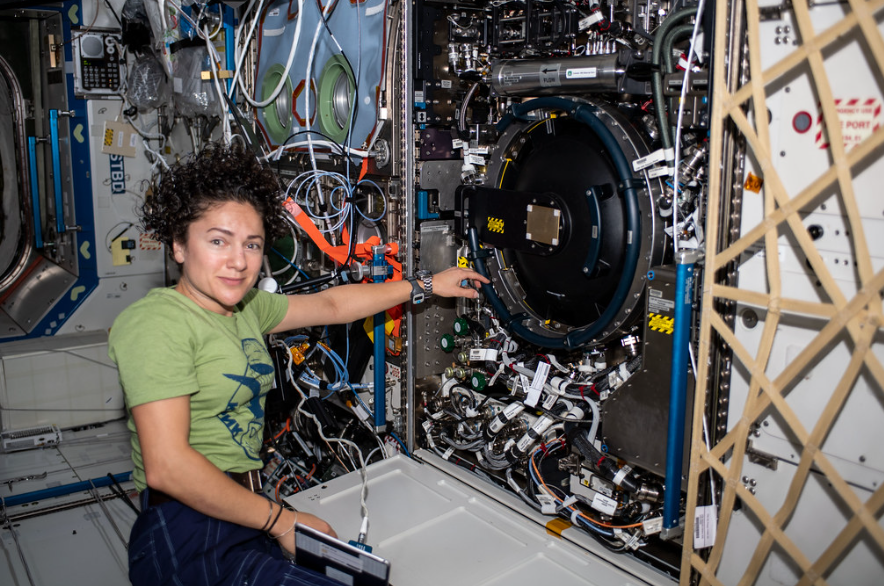Understanding how fire spreads and behaves in space is crucial for the safety of future astronauts and for understanding and controlling fire here on Earth.
Microgravity is also crucial for combustion researchers to test some of the core principles of the field. ZIN in partnership with the NASA Glenn Research Center (GRC) developed, maintains and operates the ISS Fluids and Combustion Facility (FCF) Combustion Integrated Rack (CIR). The primary focus of microgravity combustion experiments has been related to either fire safety in space or better understanding of practical combustion on Earth and in space.
The reduced gravity creates flames that look a lot different from the ones seen here on Earth: with the near absence of gravity on the space station, flames tend to be spherical. On Earth, hot gasses from the flame rise while gravity pulls cooler, denser air to the bottom of the flame. This creates both the shape of the flame, as well as a flickering effect. In microgravity, this flow doesn’t occur. This reduces the variables in combustion experiments, making them simpler and creating spherical shaped flames.
The CIR, along with facilities such as the Microgravity Science Glovebox, created a secure and safe environment in which to study combustion without putting the crew in danger.
